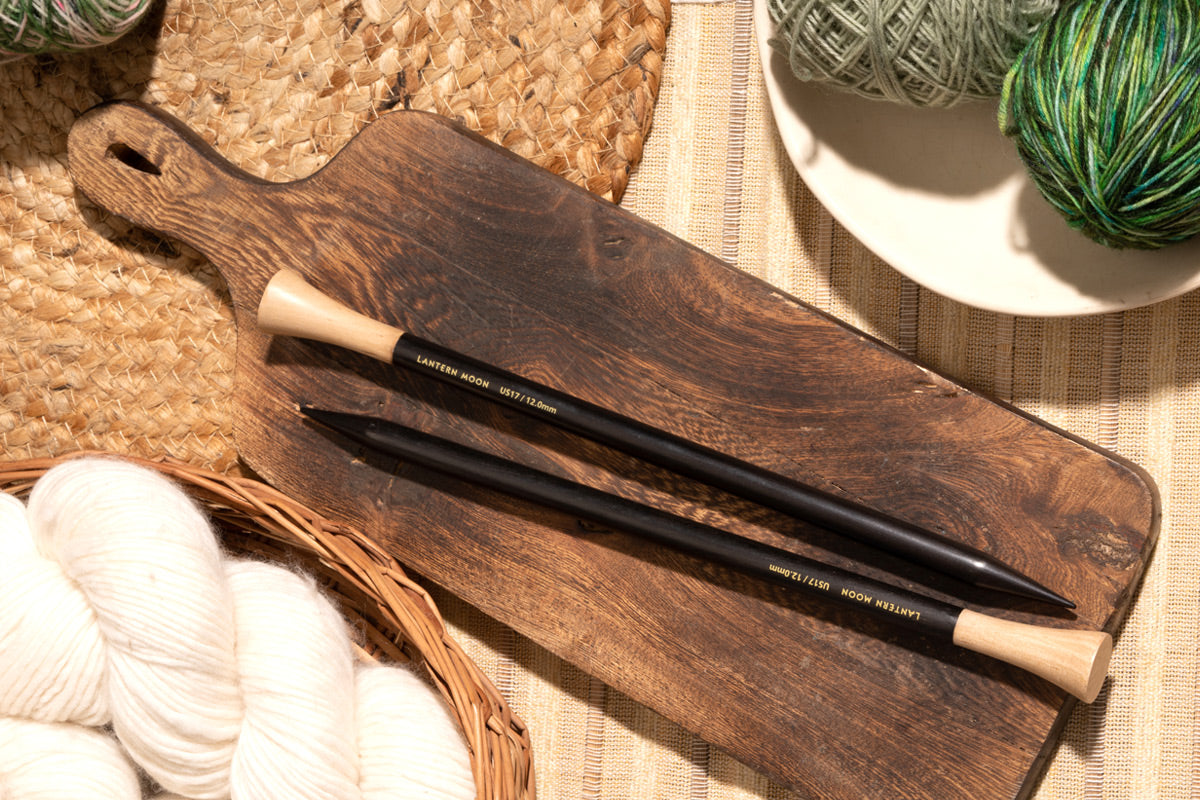
Slip stitch in knitting is not a mere stitch but a technique that works in a variety of ways. The technique is very simple, you move the stitches from the left needle to the right needle without being actually knitting it. This simple slipping off the stitch is functional, decorative and used for practical purposes. It's worth experimenting with different slip stitch patterns and incorporating them into your designs to create unique and beautiful results.
In knitting, slip stitches are used for knitting back and forth as well as in the round. You can create an even edge on your finished garment or smoothly join the round or create shapes or interesting colorful patterns. In this blog, let’s walk you through slip stitch in knitting and its various purposes.
Slip Stitch in Knitting
Abbreviated as SL ST in knitting patterns in both US and UK terms, stitch technique can be used for various purposes. Whether you are working with a pair of single pointed knitting needles on a back or forth knit pattern or with circular needles or knitting in the round projects with either a set of double pointed needles, circular needles or the magic loop techniques, the slip stitch works with all. Whenever a knitting pattern calls for a slip stitch, it will usually indicate how to slip the stitch. This means you can slip the stitch without knitting or purling. There are only two ways this could go, knit-wise or purl-wise as knitting is based on two of these basic stitches. You can check out our guide on how to knit and purl for beginners. If the pattern does not mention anything, you simply follow the stitch pattern that you’ve worked in the row or round.
So, let’s take a look at how to slip stitches and also when we need to work with the stitch technique.
Slip the Stitch Knit wise - You transfer the stitch from the left needle to the right needle without knitting with the working yarn kept behind the work.
Slip the Stitch Purl wise - Move the stitch to the other needle without purling while the yarn will remain behind the work. If you are working on a row or round of purl stitches and you are instructed or not, you will follow this step.
Besides these, you would find other knitting abbreviations.
Slip Stitch with Yarn in Front (WYF) or Yarn in Back (WYB) – This means slip the stitch “with working yarn in front" or "with working yarn in the back". The ‘front’ and ‘back’ does not mean the right and wrong sides of the piece but the placement of the yarn.
Slip Stitch with Yarn on the Needle (WYON) – This means the yarn is carried on or over the knitting needle and worked on both sides of the pattern - WS and RS the same way. Hold the working yarn in front of the stitch and insert the right knitting needle into the next stitch from back to front as if to purl and then slip the stitch onto the needle. Bring the yarn over the knitting needle from front to back of the stitch, placing it next to the slipped stitch (sl) and work the next stitch according to the pattern.
The slip stitch is very simple and opens up plethora of opportunities to incorporate new designs, colors and techniques in your knitting projects.
1. Slip Stitch Colorwork Patterns
Slip stitch is one of the most common techniques to work with multiple colors. Even in a normal knitting pattern slip stitches can create a similar effect to Fair Isle or Mosaic knitting, but more simply. Non-knitters won’t even know the difference!
All you need to do is change colors and slip stitches. This will end up with lines of spare yarn called ‘floats’ on the WS of the knitting pattern. Keep these floats loose enough but not very lose. Maintain a uniform tension so that the front of the piece does not pucker.
If you are planning to work slip stitch colorwork for the first time, start by knitting a gauge swatch. This way you get practice of the slip-stitch pattern and managing the floats in the back. Make sure to gently spread the stitches on the right-hand needle to an even tension. Working on circular knitting needles methods have bonus points as the length allows the spreading of the stitches making it easy to see clearly and prevents hand fatigue by carrying most of the weight on the cord.
While you can work out a pattern with multiple colors that looks Fair Isle or Stranded Colorwork, for colorwork knitting techniques you will be needing the slip stitch technique.
Double Knitting Technique – This essentially works with slip stitches. When you are knitting two different fabric simultaneously with one or two yarns, the slip stitch is your most handy tool. Double knitting produces two perfect sides of Stockinette stitches by working with two yarns and two stitches with the wrong sides facing each other.
Mosaic Knitting Patterns – To create the effects of mosaic without adding to the bulk of the fabric, here too slip stitches are extremely useful. Mosaic knitting patterns have their own set of rules but the slip stitch makes a smooth transition when you are working with two or more color yarns.
2. Slip Stitch Textured Patterns
Textures in knitting can be easily created with slip stitches and that too quite easily. With only knit and slip stitches, you can create a dense garter stitch texture with vertical stripes. This has no stretch and has a nubby 3-dimensional effect. The combination of knits and purls with some slipped stitch rows, creates some stockinette stitch rows has the effect of a woven appearance. The purl bumps give an extra 3-dimensional quality. The dense and squishy fabric has a lot of horizontal stretch. Both the right and wrong side of the work are visually pleasing with very different effects.
Even for your simplest projects, you can give this a try and create a textured effect.
3. Slip Stitch Chain for Neat Edges
Slip-stitch makes your knitting pattern look neat. In fact, it is the commonly used knitting trick for neat edges. You simply have to slip the last stitch of the row and you will have a neat finish. This works for projects such as a dishcloth, scarf, blanket and other projects knit back and forth. You can apply the stitch technique whether you are knitting back and forth with circular needles or using a pair of single pointed needles.
4. Slip Stitch for Seamless Rounds
There are multiple ways to work a seamless start of a round whether you work with double-pointed needles or circular needles. The simplest way to join the round is to cast on an extra stitch and slip into the other knitting needle. This way you have an invisible join that blends well in the pattern.
The slip stitch in knitting has endless possibilities. The handy techniques have you work out smoothly through knitting patterns.
For all your craft needs, explore the Lantern Moon collection for premium knitting needles. Handcrafted by skilled artisans, the needles reflect superior craftsmanship. Made from prized ebony wood, the tools and accessories have a velvety finish that is smooth in the hands of the maker.
